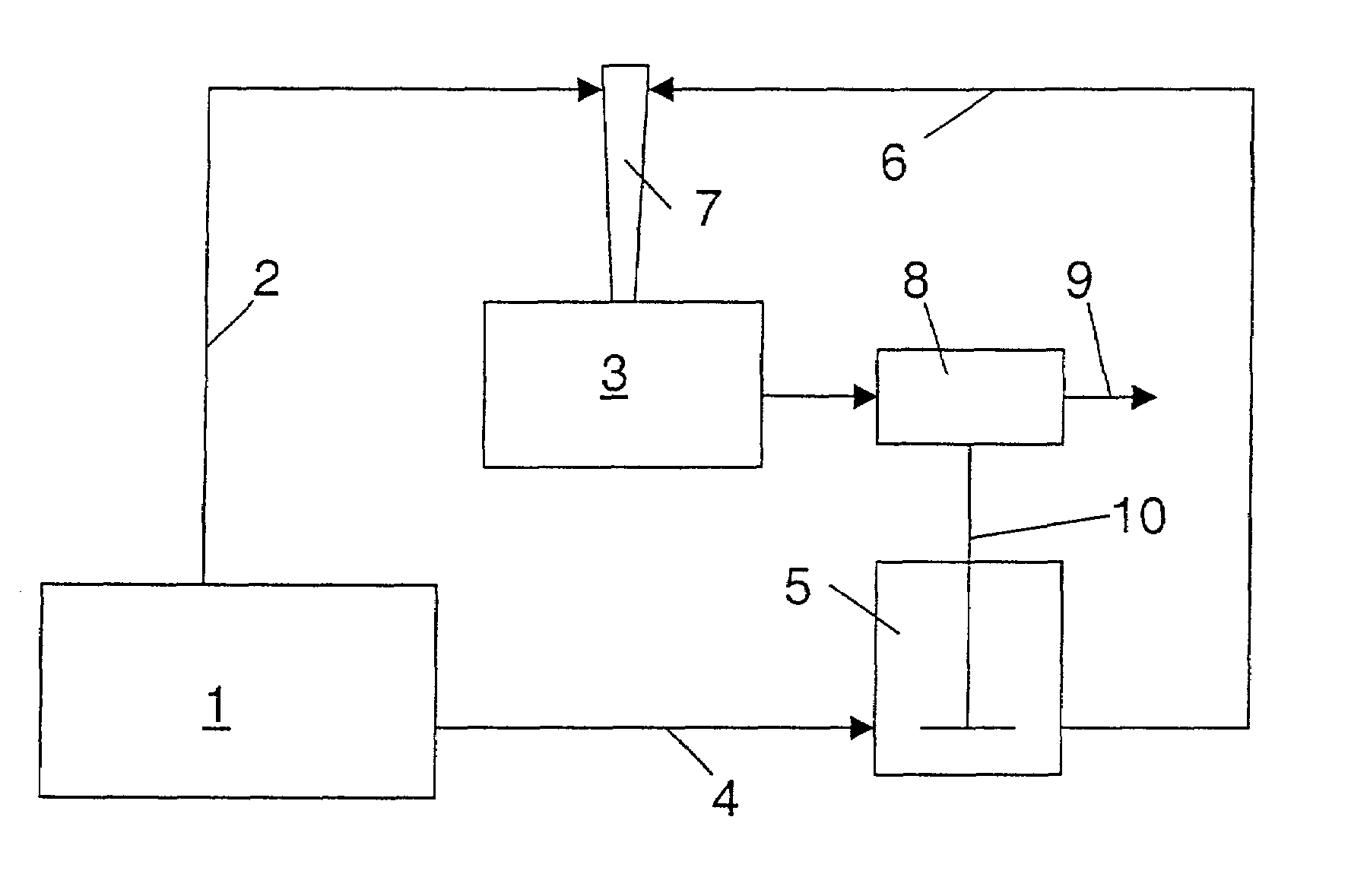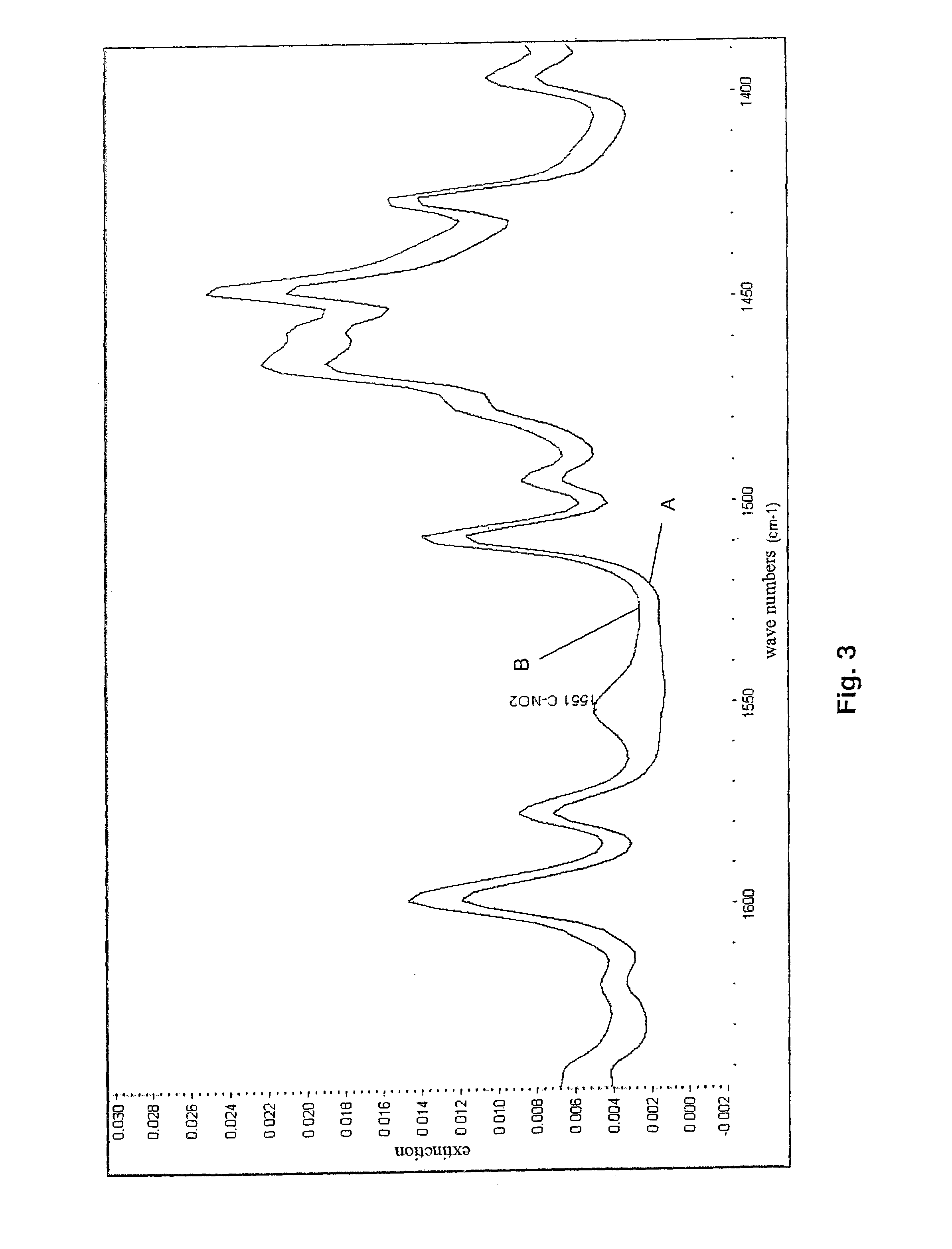Fuel conditioning process
a technology of internal combustion engine and fuel conditioning process, which is applied in the direction of liquid carbonaceous fuels, fuel additives, petroleum industry, etc., can solve the problems of requiring a lot of energy, achieve the effect of reducing nitrogen-oxide emission of motor vehicles, no additional energy expenditure, and improving fuel combustion
- Summary
- Abstract
- Description
- Claims
- Application Information
AI Technical Summary
Benefits of technology
Problems solved by technology
Method used
Image
Examples
Embodiment Construction
[0019]FIG. 1 depicts the design of a device on board a motor vehicle for carrying out the process according to the present invention. A fuel tank 1 for storing the original fuel is provided in the motor vehicle (not shown), the fuel tank supplying fuel via a line 2 to internal combustion engine 3 and via a line 4 to gassing unit 5. The fuel which has been treated in the gassing unit, also referred to as starting fuel, is fed to internal combustion engine 3 via line 6. For feeding the fuel into internal combustion engine 3, provision is made for a bi-fuel injector 7. Using bi-fuel injector 7, it is possible for the starting fuel to be metered into the original fuel from fuel tank 1 and to be fed into internal combustion engine 3. The combustion gas of engine 3 is fed to a nitrogen oxide storage-type catalytic converter 8 in which the nitrogen oxides are adsorbed. Downstream of nitrogen oxide storage-type catalytic converter 8, the combustion gas is discharged through exhaust branch 9...
PUM
| Property | Measurement | Unit |
|---|---|---|
| temperature | aaaaa | aaaaa |
| temperatures | aaaaa | aaaaa |
| temperature | aaaaa | aaaaa |
Abstract
Description
Claims
Application Information
 Login to View More
Login to View More - R&D
- Intellectual Property
- Life Sciences
- Materials
- Tech Scout
- Unparalleled Data Quality
- Higher Quality Content
- 60% Fewer Hallucinations
Browse by: Latest US Patents, China's latest patents, Technical Efficacy Thesaurus, Application Domain, Technology Topic, Popular Technical Reports.
© 2025 PatSnap. All rights reserved.Legal|Privacy policy|Modern Slavery Act Transparency Statement|Sitemap|About US| Contact US: help@patsnap.com



